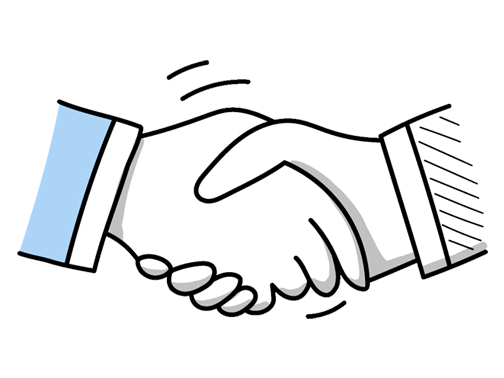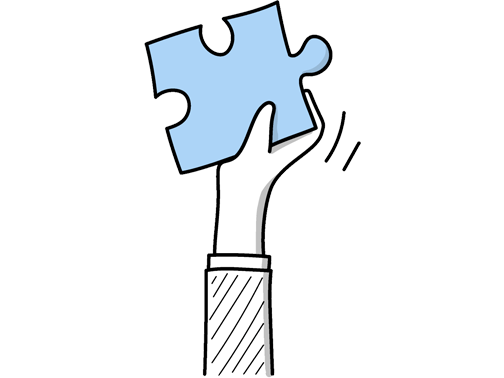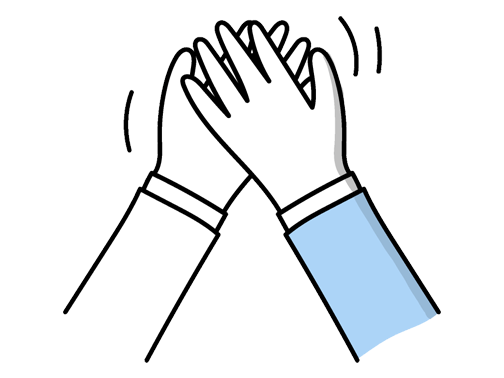Senior Hairdresser Interview Questions (2025 Guide)
Find out common Senior Hairdresser questions, how to answer, and tips for your next job interview
Practice Interviews Online - Identify your strengths and weakness in a realistic Senior Hairdresser mock interview, under 10 minutes
Practice Now »Senior Hairdresser Interview Questions
This interview question helps assess your problem-solving skills and product knowledge when facing challenges in hair treatments. You need to say that you carefully evaluate the client’s hair condition, review the product ingredients or application steps, and adjust the treatment accordingly while prioritizing client safety and satisfaction.
Example: When a hair treatment or product doesn’t deliver the expected result, I start by listening carefully to the client’s experience and checking the product’s application. Sometimes, adjusting timing or technique makes a big difference. I recall once a client’s colour faded too quickly; by switching to a gentler formula and suggesting aftercare tweaks, we restored their hair’s vibrancy. It’s about being attentive and adaptable to find the best solution.
This interview question aims to assess your ability to work well within a team, ensuring smooth operations and high-quality service in the salon. You need to say that you actively listen, share clear instructions, and encourage open feedback to foster a positive and cooperative work environment.
Example: I focus on creating an open atmosphere where everyone feels comfortable sharing ideas and feedback. For example, I regularly check in with colleagues during appointments to stay coordinated and maintain a smooth workflow. Listening carefully and respecting each team member’s input helps us work better together, ensuring clients leave happy and the salon runs efficiently.
Hiring managers ask this to see if you have the technical skills and creativity needed for the role. You need to explain your experience with different coloring techniques, how you customize colors for clients, and how you advise them on aftercare to maintain their color.
Example: Certainly. When working on hair coloring, I focus on choosing shades that complement the client’s skin tone and lifestyle, ensuring a natural, flattering result. I pay close attention to placement during highlight application to enhance dimension without harsh lines. I find it important to explain each step clearly, so clients understand how to care for their color at home and maintain its vibrancy between appointments.
This question aims to assess your problem-solving skills and creativity in handling unique client needs. You need to share a specific example where you identified a hair issue and used an innovative approach to achieve a great result.
Example: Certainly. A client once came in with very damaged hair wanting to go blonde. Instead of a harsh bleach, I suggested a gradual lightening process combined with deep conditioning treatments. Over a few sessions, we achieved a natural, healthy-looking blonde that maintained hair integrity. This approach kept her hair strong while meeting her style goal, and she appreciated the patience and care taken throughout.
Employers ask this question to see how you manage pressure and lead a team effectively during challenging times. In your answer, clearly describe how you communicated tasks, organized roles based on strengths, and kept the team motivated to handle the busy period smoothly.
Example: During a particularly busy holiday season, I coordinated the team by clearly assigning roles based on strengths and keeping everyone updated throughout the day. When unexpected walk-ins increased our workload, I calmly reassessed priorities, ensuring clients were attended to without feeling rushed. By staying approachable and encouraging, I helped the team stay focused and motivated, which led to a smooth service flow despite the pressure.
Questions like this assess your ability to manage time efficiently and maintain client satisfaction under pressure. You need to explain that you quickly evaluate each client's needs, prioritize based on urgency and service length, and communicate clearly to keep everyone informed.
Example: When several clients need attention, I quickly assess each request and the time involved. I focus first on those with urgent or time-sensitive treatments, while keeping others updated and comfortable. For example, if someone is waiting for a simple trim and another needs a full colour, I’d start the colour and fit in the trim during processing time. It’s about balancing efficiency with great service.
Questions like this assess your adaptability and experience in different work settings, which affect how you handle clients and teamwork. You need to clearly mention the types of salons you've worked in and highlight how those environments shaped your skills and approach.
Example: I’ve worked in a variety of settings, from bustling city salons catering to a diverse clientele to more boutique, upscale environments where personalised service is key. One salon focused a lot on colour correction and creative styles, which really sharpened my technical skills. I enjoy adapting to different atmospheres and client needs, whether it’s a fast-paced team or a quieter space where building strong client relationships is the priority.
What they want to know is how you handle difficult situations and apply your skills creatively to achieve great results. You need to describe a challenging project, explain the techniques you used to solve problems, and share the positive outcome or lessons you gained.
Example: One of the toughest projects I worked on involved creating a complex balayage for a client with very dark, damaged hair. It required careful layering to avoid further damage while achieving the right tone. I took extra time with treatments and tested sections before proceeding. The result was a natural, vibrant look the client loved, and it reinforced the importance of patience and precision in challenging cases.
This interview question checks if you prioritize client safety and comply with health regulations. You need to explain how you follow UK hygiene standards, use proper sterilization methods like autoclaves or chemical sterilizers, and maintain a clean, organized workspace.
Example: I always make sure to follow the latest health and safety guidelines by regularly disinfecting my scissors, combs, and brushes with appropriate sterilizers. I keep my workstation clean and clutter-free throughout the day to avoid any cross-contamination. For example, after each client, I wipe down surfaces and wash my hands to maintain a safe and comfortable environment for everyone. This approach helps build trust and ensures high standards.
Hiring managers ask this question to see how you handle challenges and think critically under pressure. You need to explain the problem clearly, describe the steps you took to resolve it, and highlight the positive outcome for the client.
Example: Certainly. Once, a client came in with severely damaged, over-processed hair wanting a complete colour change. I carefully assessed the condition, recommended gradual treatments to restore health, and created a tailored plan over several sessions. This approach not only safeguarded her hair but also achieved the look she desired, turning a challenging situation into a positive experience for her.
Questions like this assess your technical expertise and adaptability in hair cutting, showing you understand how to tailor styles to different hair types. You need to clearly name the techniques you're skilled in, like layering, point cutting, and blunt cutting, and briefly explain how you modify these methods for various hair textures.
Example: I’m skilled in a range of cutting techniques, from classic blunt cuts to modern layering and texturizing. For example, I often use point cutting to add softness to thick hair, while precision cutting suits fine, straight hair. I stay updated with trends like the textured bob and use creative methods to ensure each style suits the client’s hair type and personal style.
This question assesses your problem-solving skills and ability to stay calm under pressure to ensure client satisfaction. You need to explain that you stay composed, quickly assess the situation, and adapt your technique or approach to meet the client’s needs while maintaining professionalism.
Example: When unexpected challenges arise, I stay calm and listen carefully to the client's concerns. Once, a colour didn’t develop as planned, so I quickly adjusted the formula and explained the process to reassure them. Being adaptable and communicating clearly helps me turn surprises into positive experiences while maintaining trust and delivering the best results possible.
Hiring managers ask this question to gauge your level of expertise and career development in hairdressing. You should clearly state your total years of experience, mention your career progression, and highlight specialized skills you have mastered.
Example: I’ve worked as a hairdresser for over 12 years, starting as an apprentice and steadily advancing to senior roles. Throughout this time, I’ve honed skills in cutting, colouring, and styling all hair types, from classic cuts to contemporary trends. I’ve also trained junior stylists, which has been rewarding and deepened my understanding of the craft. For example, mastering balayage and precision cutting has really shaped my approach.
Hiring managers ask this question to understand your growth, skills development, and leadership in the industry. You should clearly outline your career path from junior stylist to senior hairdresser, highlighting key responsibilities, training you’ve undertaken, and examples of how you handled challenges and led your team.
Example: I started as an apprentice, quickly mastering cutting and colouring techniques. Moving into a senior stylist role, I took on mentorship responsibilities, helping junior team members grow. I've always kept up with trends, recently introducing balayage services that boosted client retention. Managing challenging bookings taught me to stay calm under pressure, ensuring smooth operations. Leading a team while staying hands-on has been rewarding and shaped my approach as a senior hairdresser.
This question aims to assess your leadership skills and how you foster a positive, productive work environment. You need to explain that you lead by example, communicate clearly, and encourage creativity and teamwork to inspire your team.
Example: I believe in leading by example—showing passion and commitment sets the tone for the team. Regularly checking in with everyone helps me understand their goals and challenges. Celebrating small wins, whether it’s mastering a new technique or receiving client praise, keeps morale high. Encouraging creativity and sharing ideas makes the workplace feel collaborative and inspiring. For example, I often organise informal training sessions where we learn from each other.
Questions like this aim to assess your communication skills, leadership, and problem-solving abilities in managing team dynamics effectively. You need to explain how you listen to everyone’s views, encourage collaboration to find solutions, and lead calmly to keep the team focused and clients happy.
Example: When conflicts arise, I focus on understanding everyone’s viewpoint by listening carefully. I encourage open dialogue to find solutions that satisfy both the team and our clients. For example, if two stylists disagree on booking priorities, I mediate calmly to reach a compromise that keeps the salon running smoothly. Leading by example, I stay composed to help the team feel supported and valued throughout any challenge.
Questions like this assess your commitment to ongoing professional growth and your ability to keep clients satisfied with current styles. You need to say that you regularly attend industry workshops or seminars and actively incorporate new trends into your client work.
Example: I stay current by regularly attending industry workshops and following leading stylists on social media to spot fresh trends. I enjoy experimenting with new techniques in the salon to see what works best for clients. Whenever I learn something valuable, I make a point to share it with my team, which helps us all elevate our skills and keep the salon’s offerings innovative and fresh.
Employers ask this to see how you create trust and long-term relationships with clients. You need to say that you provide personalized service, listen carefully to clients' needs, and follow up to ensure their satisfaction, which helps build loyalty over time.
Example: Building a loyal client base starts with genuinely listening to what each person wants and tailoring the experience to them. I focus on creating a comfortable, friendly atmosphere where clients feel valued—not just another appointment. Staying consistent with quality and remembering little details, like their preferred style or special occasions, helps clients trust me and keeps them coming back. It’s really about relationships as much as hair.
What they want to know is if you have hands-on experience with various hair treatments and if you understand how to customize them for different clients. You should mention specific treatments you’ve performed, explain the techniques and products you use, and highlight how you tailor your approach based on each client's hair type and needs.
Example: I’ve worked extensively with a variety of treatments, from deep conditioning and keratin smoothing to scalp therapies and bespoke colour correction. I focus on understanding each client’s hair type and concerns to choose the right products and techniques. For example, I often combine Olaplex treatments with personalised hydration masks to restore damaged hair, ensuring results that feel as healthy as they look.
This question helps the interviewer understand your communication skills and ability to stay calm under pressure. You need to say that you listen carefully, remain patient, and find solutions that satisfy the client while maintaining professionalism.
Example: When I encounter demanding clients, I stay calm and listen carefully to understand their concerns. I find that showing genuine empathy and offering clear, honest advice helps build trust. For example, if a style isn’t achievable, I suggest alternatives that suit their hair, making them feel valued and heard. It’s all about creating a positive experience, so they leave happy and confident.
Interviewers ask this to see if you can manage your own work while supporting others' growth, which is crucial in a leadership role. You need to say that you prioritize tasks efficiently and make time to guide juniors through hands-on training and constructive feedback.
Example: Balancing my senior role with mentoring comes down to staying organised and approachable. While managing appointments and ensuring quality service, I make time to guide juniors—whether it’s sharing techniques during quieter moments or offering feedback after a client. Recently, I helped a junior stylist build confidence with new colouring methods by working alongside them, creating a supportive environment without compromising the salon’s flow.
Interviewers ask this question to see how you manage client dissatisfaction and maintain professionalism under pressure. You need to say that you listen carefully to understand their concerns, show empathy to reassure them, and offer a clear solution to fix the issue.
Example: If a client isn’t happy with their haircut, I first listen carefully to understand exactly what’s bothering them. I stay calm and empathise, letting them know I want to make it right. For example, if the cut isn’t what they expected, I discuss options to adjust the style or offer a touch-up. It’s important they leave feeling confident and satisfied with their look.
What they want to understand is your commitment to customer satisfaction and how you handle challenging situations. You need to describe a specific example where you took extra steps to ensure the client was happy, showing your dedication and problem-solving skills.
Example: Once, a client came in last minute before a big event, unsure about their hairstyle. I stayed late to consult and trial a few options until we found one they loved. Seeing their confidence boost was rewarding, and they left genuinely happy. It’s these moments, going beyond just a haircut, that really make the difference in customer satisfaction.
This question assesses your ability to manage time and organize multiple clients efficiently to maintain a smooth workflow and ensure customer satisfaction. You need to explain how you schedule appointments based on service complexity, use tools to track bookings, and communicate proactively with clients about any timing changes.
Example: I keep a well-structured schedule to make sure each client gets the time they need without delays. If I see a session running over, I let the next client know promptly. For example, if a cut takes longer, I’ll communicate early and adjust plans to keep things moving smoothly. Staying organised and keeping everyone informed helps maintain a relaxed, professional atmosphere where clients feel valued.
What they want to know is how you support and develop others, showing leadership and communication skills. You should explain how you organized training to meet different learning needs and describe the positive results your mentoring achieved.
Example: Yes, I’ve supported several junior stylists by offering hands-on guidance during busy periods and sharing tips to build their confidence, especially with challenging cuts or new techniques. I find that encouraging open questions and providing constructive feedback helps them develop their skills quickly. One junior stylist I mentored recently won a local styling competition, which was rewarding to see and boosted the whole team’s morale.
Ace your next Senior Hairdresser interview with even more questions and answers
Common Interview Questions To Expect
The interviewer is looking to see how you found out about the job opportunity and what sources you use to stay informed about potential career opportunities. You can answer honestly about how you came across the job posting.
Example: I actually found out about this position through a friend who works in the same industry. She mentioned that your salon was looking for a senior hairdresser and thought I would be a good fit. I also regularly check job boards and industry websites to stay updated on potential career opportunities.
The interviewer is looking for you to highlight your key skills, qualities, and experiences that make you a strong candidate for the role. Be specific and provide examples to support your strengths.
Example: My biggest strengths as a senior hairdresser are my excellent communication skills, attention to detail, and ability to stay current with the latest trends in the industry. For example, I always make sure to listen carefully to my clients' needs and preferences to deliver the best results. Additionally, I regularly attend workshops and training sessions to enhance my skills and offer the most up-to-date services.
Candidates can answer by stating a specific salary range, mentioning their previous salary, or asking about the salary range for the position. Interviewers are looking for candidates who are realistic, confident, and have done their research on industry standards.
Example: I would expect a salary in the range of £25,000 to £30,000, based on my experience and skills. I was previously earning £22,000 in my last position. Can you provide me with more information on the salary range for this role in your salon?
The interviewer is looking for honesty, self-awareness, and a clear explanation of the reasons behind the career change. Possible answers could include seeking new challenges, better work-life balance, or a passion for a different industry.
Example: I decided to change career paths because I was looking for new challenges and opportunities to grow. I also wanted to achieve a better work-life balance and explore my passion for the beauty industry. Overall, I felt that transitioning to a career as a senior hairdresser would allow me to pursue my interests and continue developing my skills.
The interviewer is looking for examples of how you stay calm and focused under pressure, how you prioritize tasks, and how you communicate effectively with colleagues and clients.
Example: I handle pressure by staying organized and prioritizing tasks effectively. I make sure to communicate with my colleagues and clients to ensure everyone is on the same page. By staying calm and focused, I am able to deliver high-quality results even in high-pressure situations.
Company Research Tips
The company's website is a goldmine of information. Look for details about the company's history, mission, values, and culture. Pay special attention to the 'About Us', 'Our Team', and 'Services' sections. For a Senior Hairdresser role, understanding the types of services offered, the company's approach to customer service, and any unique selling points is crucial. Also, check if they have a blog or news section to stay updated with their latest achievements or offerings.
Tip: Look for any specific hairdressing techniques or products they mention on their website. This can give you an idea of what skills or knowledge might impress them during the interview.
Social media platforms can provide a more informal insight into a company's culture and values. Check their Facebook, Instagram, Twitter, and LinkedIn profiles. Look at the content they post, how they interact with customers, and any reviews or comments. For a Senior Hairdresser role, you might find photos or videos of their work, customer testimonials, or information about events or promotions.
Tip: Pay attention to the style and quality of the hairdressing work they showcase on their social media. This can give you a sense of their standards and expectations.
Understanding a company's market position can be very beneficial. Research their main competitors in the UK and compare their services, prices, and customer reviews. This will give you a broader understanding of the industry and the specific challenges and opportunities the company might be facing.
Tip: Use this information to demonstrate your industry knowledge during the interview and suggest ways you could help the company stand out from its competitors.
Websites like Glassdoor provide reviews from current and former employees. These can give you a sense of the company's work environment, management style, and employee satisfaction. For a Senior Hairdresser role, look for comments about the salon's organisation, teamwork, and training opportunities.
Tip: Use this information to ask informed questions during the interview about aspects of the company culture or work environment that are important to you.
Curveball Questions
How to respond to the silly questions where there's no right answer.
This question assesses creativity and critical thinking skills. Common answers include figures like Albert Einstein or Leonardo da Vinci, with explanations about their contributions to society. An answer that showcases a unique historical figure and provides a thoughtful explanation will stand out.
Example: If I could have dinner with any historical figure, I would choose Cleopatra. She was a powerful and influential ruler in ancient Egypt, and I would love to learn more about her leadership style and strategies for maintaining power in a male-dominated society. Additionally, her knowledge of beauty and cosmetics could provide valuable insights for my career as a hairdresser.
This question evaluates creativity and problem-solving skills. Common answers include superpowers like flying or invisibility, with explanations about how they would benefit others. An answer that showcases a unique superpower and provides a creative explanation will stand out.
Example: If I were a superhero, my superpower would be the ability to instantly style hair in any desired way. This would allow me to help people feel confident and beautiful, while also saving time and effort in the salon. Imagine the smiles on my clients' faces when they walk out with their dream hairstyle without any hassle!
This question assesses personal preferences and creativity. Common answers include popular songs with sentimental value or meaningful lyrics. An answer that showcases a unique song choice and provides a heartfelt explanation will stand out.
Example: If I could only listen to one song for the rest of my life, I would choose 'Bohemian Rhapsody' by Queen. The song's dynamic range, intricate harmonies, and powerful lyrics never fail to captivate me. It's a timeless classic that I could listen to on repeat and never get tired of, always finding new nuances and emotions with each listen.
This question evaluates problem-solving skills and priorities. Common answers include items like a knife, a lighter, and a water purifier for survival. An answer that showcases unique items and provides a strategic rationale will stand out.
Example: If I were stranded on a deserted island, I would bring a solar-powered hair straightener, a waterproof journal and pen, and a hammock. The hair straightener would allow me to maintain my personal grooming and boost my morale, the journal and pen would help me document my experiences and thoughts for sanity, and the hammock would provide a comfortable place to rest and relax amidst the challenges of survival.
This question assesses historical knowledge and personal interests. Common answers include eras like the Roaring Twenties or the Renaissance, with explanations about the cultural significance and lifestyle of the time. An answer that showcases a unique era and provides a detailed explanation of its appeal will stand out.
Example: If I could travel back in time to any era, I would choose the Golden Age of Hollywood in the 1950s. It was a glamorous and exciting period in film history, with iconic stars, timeless fashion, and legendary movies. I would love to experience the magic of the silver screen firsthand, attend red carpet premieres, and maybe even style the hair of Hollywood's elite for the big screen!
What to wear to an Senior Hairdresser interview
- Clean, professional attire
- Comfortable, stylish shoes
- Minimal, tasteful jewellery
- Neat, fashionable hairstyle
- Light, professional makeup
- Avoid overly bright colours
- Well-fitted blazer or cardigan
- Smart trousers or skirt
- Clean, manicured nails
- Avoid excessive perfume





